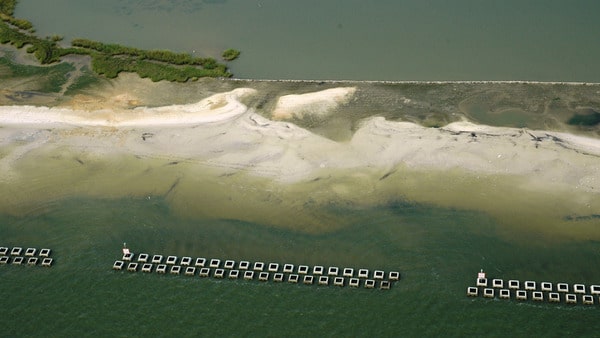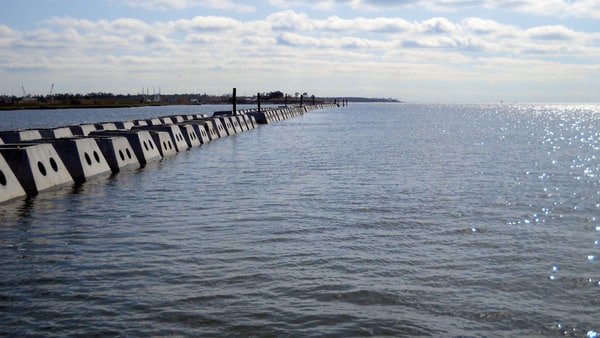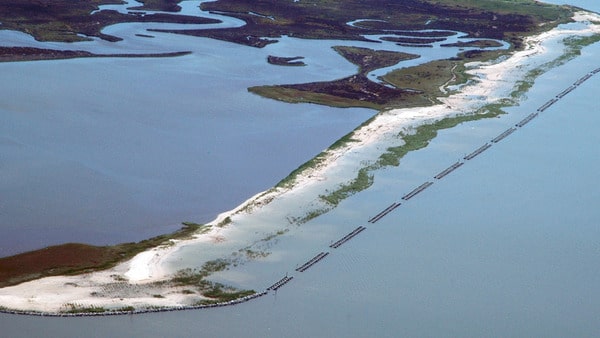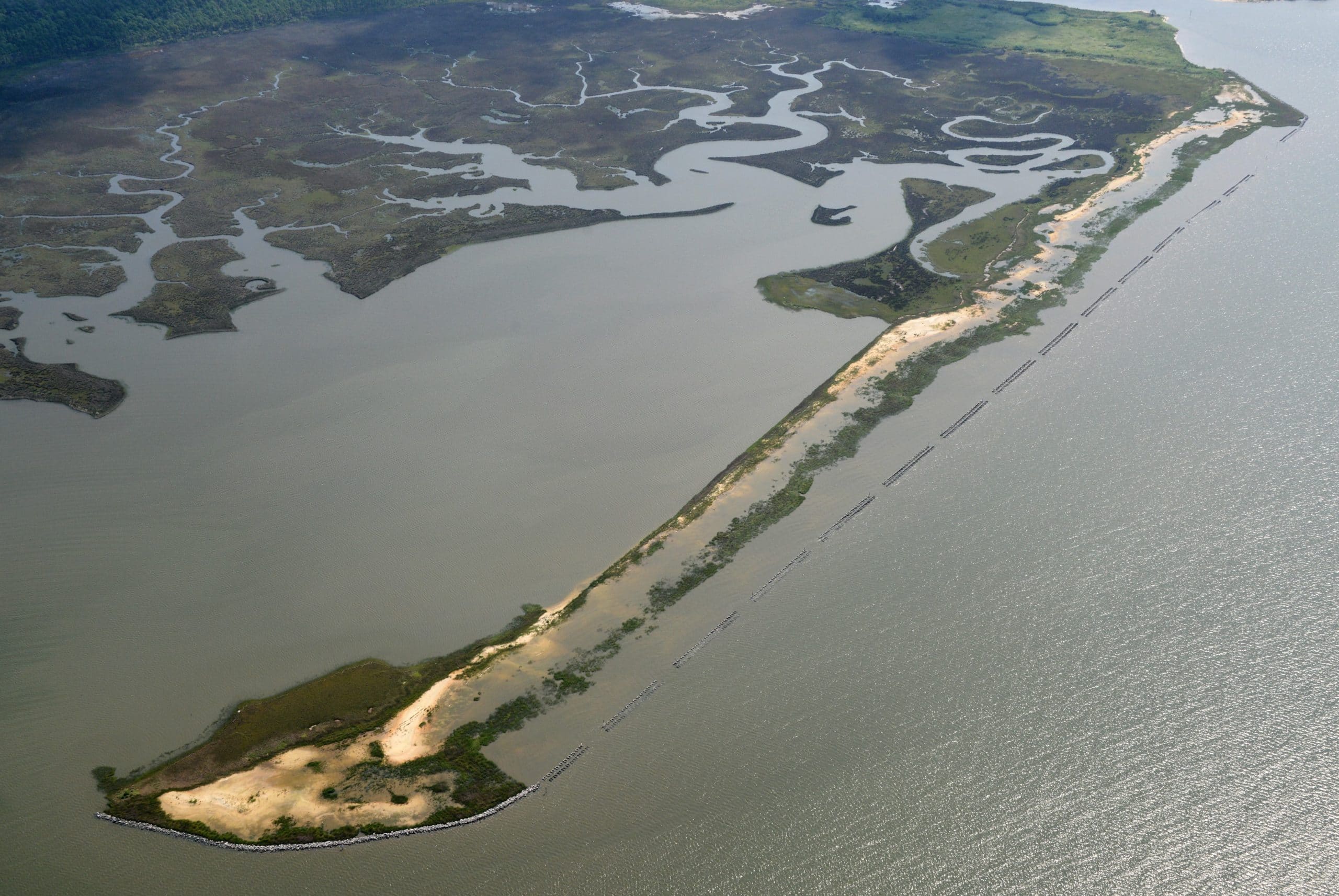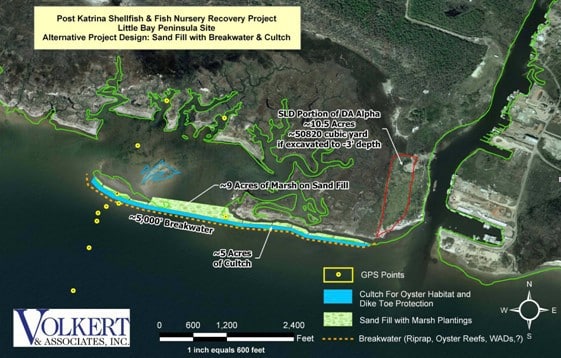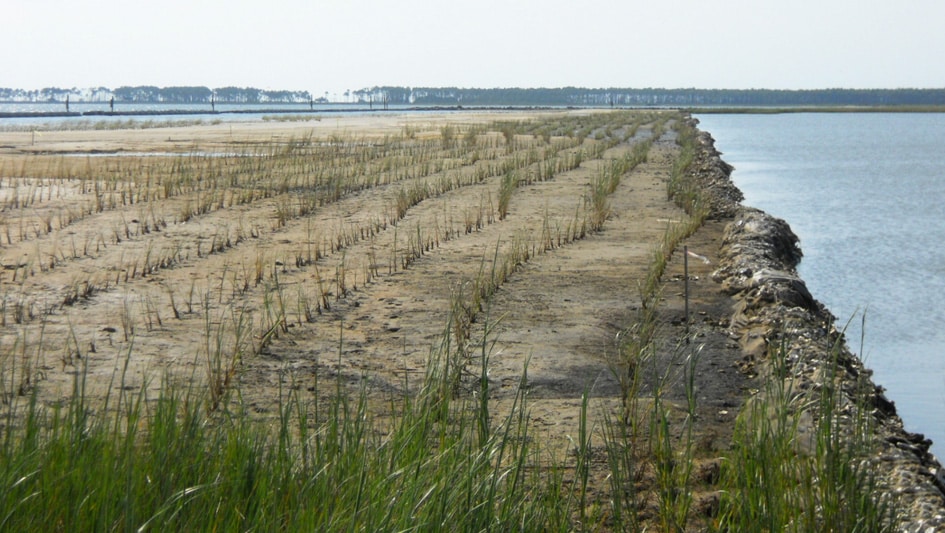Little Bay Marsh Creation Finfish and Shellfish Recovery
In 2005, Hurricane Katrina’s surge eroded the ecologically important Little Bay peninsula, threatening protected salt marsh and shellfish habitats. The Alabama Department of Conservation and Natural Resources (ADCNR) asked Volkert for a full environmental and coastal engineering analysis of an ambitious project aimed at restoring the peninsula and creating and protecting new habitats for marine life.
Volkert performed land and bathymetric surveys and wave tank modeling to evaluate scenarios for habitat creation and protection. Volkert selected dual-purpose wave attenuation units that provide shoreline protection while providing habitat for shellfish and finfish. These units also provided ADCNR the option of increasing shoreline and near-shore habitat by moving the units offshore, providing savings and flexibility.
Volkert also opted for the beneficial use of dredged material from a U.S. Army Corps of Engineers repository to create a new salt marsh habitat, which was cost-effective and minimized the environmental impact.
Sampling and monitoring of marsh and Submerged Aquatic Vegetation habitats provided a comprehensive baseline from which to monitor the newly created habitats as they develop. Volkert’s adaptive management of replanted areas provided ADCNR with a solution that evolves with changing conditions. The project was awarded the 2010 Grand Award and National Recognition Award from the American Council of Engineering Companies (ACEC). The project also received the 2011 Excellence Award from the Association of Conservation Engineers and the 2011 Engineering Project of the Year Award from Mobile Area Council of Engineers.
Location
Bayou La Batre, Alabama
Client
Alabama Department of Conservation and Natural Resources

